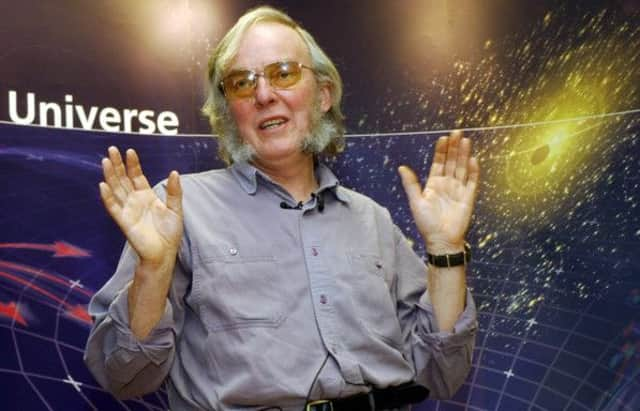Obituary: Professor Colin Pillinger, planetary scientist


PROFESSOR Colin Pillinger – who has died suddenly of a brain haemorrhage – won the hearts of the nation in 2003 when he developed a home-made spacecraft the size of a bin lid, christened it Beagle 2 and sent it to Mars to look for signs of life. Unfortunately it never got to “phone home” and disappeared without trace. The prof with the mutton-chop whiskers and cider-swilling West Country accent was disappointed he never got to tell the world that: “The Beagle has landed.”
The craft, named after HMS Beagle, the ship which carried Charles Darwin to South America and the Galapagos Islands in the 1830s, had been allowed by the European Space Agency (ESA) to “hitch a lift” on its Mars Express orbiter. It was supposed to break free, land on the Red Planet with the help of a parachute on Christmas Day 2003 and transmit data. But Prof Pillinger’s Christmas dinner came and went without hearing a squeak from his creation. Its fate was never established but it probably crashlanded on the surface of Mars.
Advertisement
Hide AdAdvertisement
Hide AdAmerican probes to Mars had previously concluded that the planet was barren, unable to support any form of life. But Prof Pillinger and others believed fossil bacteria found in a meteorite from Mars might suggest otherwise. Hence he hatched his plan for Beagle 2, which began life in a pub as a drawing on a beer mat. After creating several models, he came up with the clam-shaped version which had to weigh less than ten-stone for the ESA to allow it to piggyback on its Mars orbiter. He was forced to seek financing from private sources, noting that Beagle 2’s cost – less than £50 million – was “about as much money as Nasa loses down the back of the sofa.” (Britain has not launched a Mars surface probe since but Nasa went on, in 2008, to land its own probe, Phoenix, successfully on Mars).
Applying his talent for giving a showbiz spin to space science, Prof Pillinger asked two friends, Alex James and Dave Rowntree of the band Blur, to compose an ET-like tune which was supposed to be the first thing Beagle 2 transmitted back to Earth on Christmas Day 2003.
The professor allowed himself to be photographed with his creation in all sorts of settings, simply to ensure media coverage, not least in the tabloids. The more stuffy scientific community frowned on such antics but Prof Pillinger persevered.
Despite the failure of the Beagle 2 mission, his boyish optimism and charm helped revive waning popular interest in space exploration and he became a familiar and quirky figure on TV shows from Top Gear to Have I Got News for You? News programmes looked on him as a “go-to” man when they needed accessible comment on planetary science. Builders would stop him in the street to say: “Hoy, you’re the Beagle 2 bloke. Let me shake your hand!”
Colin Trevor Pillinger was born in Kingswood, outside Bristol, on 9 May, 1943, son of Jack Pillinger, a fitter for the Gas Board, and his wife Florence (née Honour). He was fascinated by space travel from an early age, eagerly devouring the adventures of Dan Dare in the Eagle comics and listening to the science-fiction radio show Journey into Space. He went to the local Kingswood Grammar School before graduating BSc in chemistry from University College, Swansea, in 1965, following up with a doctorate in 1968 despite admitting he had never been much good at the practical side of chemistry. “Every time I mixed two solutions, they ended up on the ceiling.”
After a chemistry research fellowship at the University of Bristol, not far from his childhood home, he switched his attention from chemistry to space and moved to Cambridge University in 1974 as a research associate in the Department of Earth Science. He remained in Cambridge as a senior researcher in the same department, but this time as part of the Open University. He was named Professor of Planetary Science in 1991 and in 1996 Professor of Astronomy at Gresham College, London, which focuses on giving free educational lectures to the general public. He was one of only a handful of British scientists asked by the US National Aeronautics and Space Administration (Nasa) to analyse lunar samples.
In retirement, Prof Pillinger ran a dairy farm outside Cambridge which he described as a “rest home for decrepit animals” – with cows, pigs, dogs, cats and a horse. He wrote three well-received books: his autobiography My Life on Mars (2010), Beagle: From Sailing Ship to Mars Spacecraft (2003) and Space is a Funny Place (2007). He was diagnosed with multiple sclerosis in 2005.
He was a Fellow of the Royal Society, of the Royal Geographical Society and the Royal Astronomical Society and was appointed CBE soon after the Beagle mission. He also has an asteroid named after him (asteroid 15614, Pillinger) which will move between Mars and Jupiter for eternity.
He suffered a brain haemorrhage at his Cambridge home and fell into a coma and died at Addenbrooke’s Hospital. He is survived by wife, Judith, and two children.